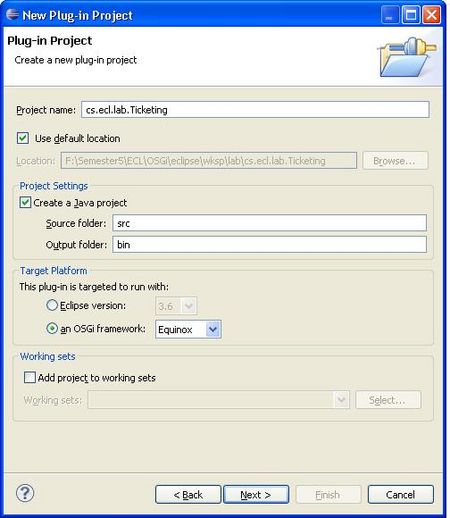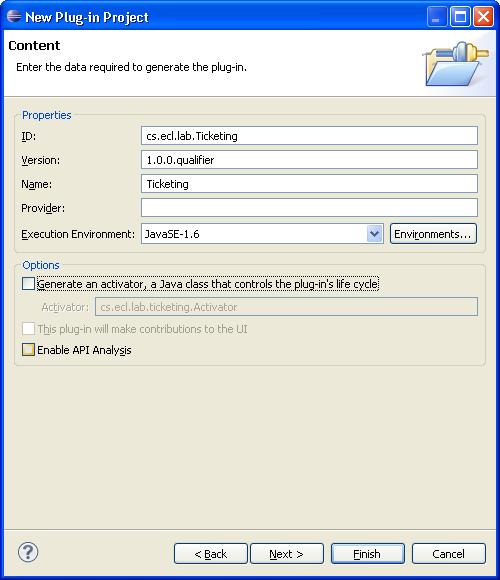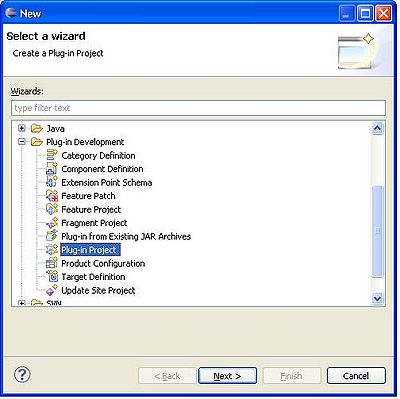Difference between revisions of "Teams Winter 2011/team1/OSGI/Create the Service Interface"
Ladanzahir (talk | contribs) (→1. Create the Service Interface) |
Ladanzahir (talk | contribs) (→1. Create the Service Interface) |
||
| Line 9: | Line 9: | ||
:[[Image: 2CreateNewPlugInProject.jpg | 450px]] | :[[Image: 2CreateNewPlugInProject.jpg | 450px]] | ||
:Make sure you check off the , so that no Activator class is created in the project (this bundel is just interfaces so it does not run). | :Make sure you check off the , so that no Activator class is created in the project (this bundel is just interfaces so it does not run). | ||
| − | :[[Image: | + | :[[Image: 3CreateNewPlugInProject.jpg | 700px]] |
:[[Image: 4_CreateNewPlugInProject.jpg | 700px]] | :[[Image: 4_CreateNewPlugInProject.jpg | 700px]] | ||
:[[Image: 5_CreateNewPlugInProject.jpg | 700px]] | :[[Image: 5_CreateNewPlugInProject.jpg | 700px]] | ||
Revision as of 17:10, 14 February 2011
1. Create the Service Interface
- First thing to do in building an OSGI application is to define the service interface so that the developer who creates the GUI part of application knows what services will be available, and what are their requirements and outcome.In order to do this please follow these steps:
1.1. Define the interface bundle
- Create a new Plug-in project in eclipse using File>New> Plug-in Project:
- Give it a proper name and Choose the target platform to be an OSGI platform:

- Make sure you check off the , so that no Activator class is created in the project (this bundel is just interfaces so it does not run).

- 700px
- 700px
- 700px
- 700px
- 700px
- 700px
- 700px
- 700px
- 700px
- 700px
- 700px
- 700px
1.2. Create the bundle with the interface
